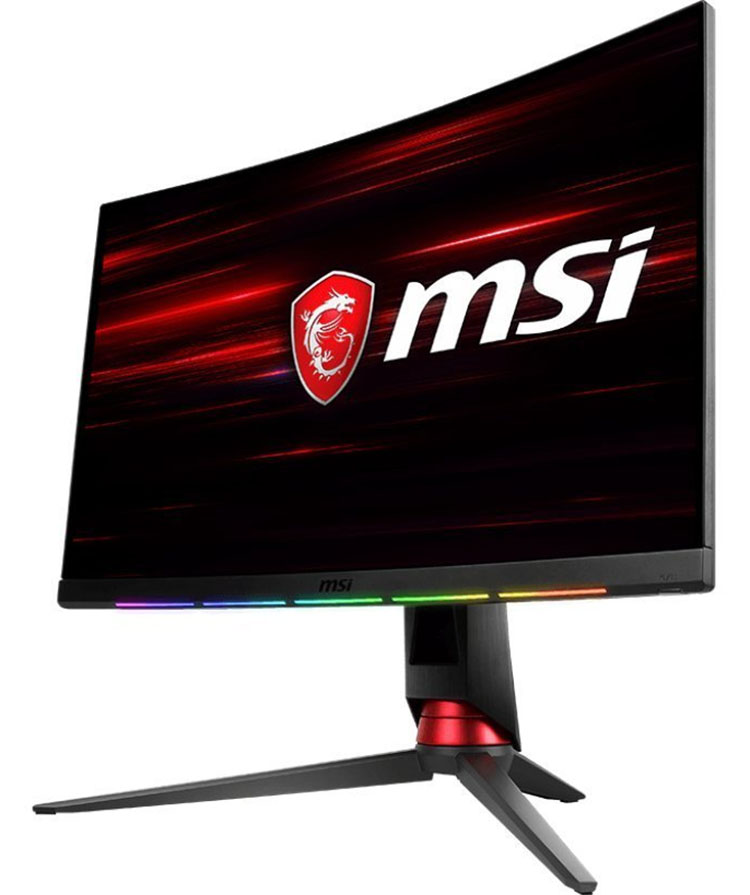MSI Optix MPG27CQ Gaming Monitor Review: Color Curves, Calibration Conundrums
Why you can trust Tom's Hardware
Conclusion
MSI makes no bones about extended color support in the MPG27CQ. While the vendor doesn’t specifically mention DCI-P3 in its marketing, based on our testing this is clearly a DCI monitor.
But it’s not merely the outer color points that matter. The lion’s share of content exists inside the color triangle. That’s where accuracy matters most. MSI got that part of the equation right. Our test results show the MPG27CQ tracks sRGB through most of the saturation range and only applies its extra color to the outermost points. When we checked out content and gamed on the display, nearly everything looked natural with only the brightest images appearing slightly overblown.
We have concerns about this monitor’s calibration abilities though. While its display is decent out of the box, we were unable to improve upon its default state. Grayscale errors were largely invisible, but given the excellent contrast VA panels are capable of, we’d like to see an improvement made to gamma tracking. And the brightness limitation when engaging the custom color temp is a head-scratcher that we haven’t encountered before.
In the end, we consider the MPG27CQ a good gaming monitor, provided you're not buying for the RGB lighting below the display, which has very limited gaming support. Most features are well-implemented, and there were no problems with overall image quality. It’s the strange quirks with calibration that tripped us up. Potential buyers should consider their needs carefully. If you just want a simple plug-and-play gaming monitor that delivers balanced performance with reasonably priced systems, it will work fine. If you want more tweaking potential and accurate sRGB color, there are better choices, such as the MSI MAG24C and Asus ROG Strix XG32V.
MORE: Best Gaming Monitors
MORE: How We Test Monitors
MORE: All Monitor Content
Get Tom's Hardware's best news and in-depth reviews, straight to your inbox.

Christian Eberle is a Contributing Editor for Tom's Hardware US. He's a veteran reviewer of A/V equipment, specializing in monitors. Christian began his obsession with tech when he built his first PC in 1991, a 286 running DOS 3.0 at a blazing 12MHz. In 2006, he undertook training from the Imaging Science Foundation in video calibration and testing and thus started a passion for precise imaging that persists to this day. He is also a professional musician with a degree from the New England Conservatory as a classical bassoonist which he used to good effect as a performer with the West Point Army Band from 1987 to 2013. He enjoys watching movies and listening to high-end audio in his custom-built home theater and can be seen riding trails near his home on a race-ready ICE VTX recumbent trike. Christian enjoys the endless summer in Florida where he lives with his wife and Chihuahua and plays with orchestras around the state.
-
Dantte Perfect example of being torn between 2 options... Do I get a single 21:9 1440p monitor with similar specs (waiting on gsync HDR), or 3 of these monitors?Reply
I currently have 3 Asus VG278H monitors I use for both gaming and work. I want to upgrade to 1440p, curved monitors (3 - flat 27" are a little wide), and better contrast (VA panel).
Setup #1, 21:9 flanked by 2 of the older monitors. I would use all three for work, but only the center 21:9 for gaming.
Setup #2, (3) of these monitors to completely replace what i have.
